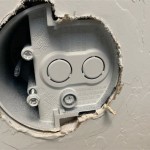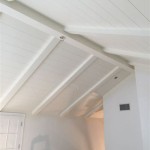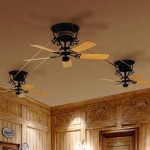What Can I Do With Old Ceiling Tiles?
Old ceiling tiles, often replaced during renovations or due to damage, don't necessarily need to end up in a landfill. Depending on their material composition and condition, numerous repurposing and recycling options exist. This article explores several alternatives for dealing with old ceiling tiles, focusing on responsible disposal and creative reuse.
Understanding Ceiling Tile Material and Potential Hazards
Before undertaking any repurposing or disposal efforts, identifying the type of material the ceiling tiles are made from is crucial. Common ceiling tile materials include mineral fiber, fiberglass, and metal. Some older tiles may contain asbestos, a known health hazard. Asbestos was commonly used in building materials up until the 1980s. Disturbance of asbestos-containing materials can release fibers into the air, which, when inhaled, can lead to serious respiratory illnesses, including asbestosis, lung cancer, and mesothelioma.
If there's any suspicion that the ceiling tiles might contain asbestos, professional testing is essential. Do not attempt to remove or handle the tiles yourself. A certified asbestos abatement contractor should be hired to safely remove and dispose of the asbestos-containing materials in accordance with local, state, and federal regulations. This is a critical step to protect personal health and the environment.
Assuming the tiles are asbestos-free, further assessment is needed regarding their condition. Are they heavily damaged, stained, or moldy? Tiles in poor condition are often unsuitable for repurposing and may be best disposed of through appropriate waste management channels. Tiles that are relatively clean and intact offer more opportunities for reuse.
Repurposing and Creative Reuse of Ceiling Tiles
Ceiling tiles can be surprisingly versatile materials for various DIY projects. The specific uses depend on the tile material, its size, and its design. Creativity and resourcefulness are key to transforming these discarded materials into something new and useful.
One potential application is as acoustic panels. Mineral fiber and fiberglass ceiling tiles inherently possess sound-absorbing properties. By framing these tiles and hanging them on walls, a homeowner can create effective and aesthetically pleasing acoustic panels, which can help to reduce echo and improve sound quality in a room. This is particularly beneficial in home theaters, music rooms, or any space where noise reduction is desired.
Ceiling tiles can also be used to create unique wall art. Their textured surfaces and geometric patterns can be highlighted with paint, stencils, or decoupage techniques. Individual tiles can be framed and hung as standalone pieces, or multiple tiles can be arranged to form a larger, cohesive artwork. This allows for a personalized and budget-friendly approach to interior decoration.
For those with gardening interests, ceiling tiles can be repurposed as weed barriers in gardens or raised beds. By placing the tiles beneath a layer of soil or mulch, they can effectively block weed growth, reducing the need for herbicides and manual weeding. This is a particularly useful application for large, unobstructed areas. Make sure the material used is safe for use with plants and soil.
Furthermore, ceiling tiles can be cut and shaped to create various craft projects. They can be used as bases for mosaics, backdrops for shadow boxes, or even components in larger sculptural pieces. The lightweight nature of many ceiling tiles makes them easy to work with, and their rigid structure provides a stable foundation for various artistic endeavors.
Another potential use involves creating textured backgrounds for photography or videography. The subtle patterns and textured surfaces of ceiling tiles can add depth and visual interest to photos and videos, providing a more professional and polished look. This is a simple and cost-effective way for amateur photographers and videographers to enhance their work.
In situations where additional insulation is needed, clean and undamaged ceiling tiles can be used as supplemental insulation in attics or basements. While they may not provide the same level of insulation as dedicated insulation materials, they can still contribute to reducing heat loss and improving energy efficiency. Proper installation is essential to ensure effectiveness and prevent moisture buildup. Always check local building codes to ensure compliance.
Responsible Disposal and Recycling Options
When ceiling tiles are unsuitable for repurposing due to damage, contamination, or material limitations, responsible disposal becomes the priority. Simply discarding them in the regular trash is often not the most environmentally friendly option.
Many recycling centers accept mineral fiber ceiling tiles for recycling. The recycled fibers can then be used in the production of new building materials or other products. Contacting local recycling facilities or waste management companies is the first step in determining whether they accept ceiling tiles and what specific requirements they may have regarding preparation and drop-off.
If recycling is not available, proper disposal through a landfill is the next best option. However, it's essential to check with the landfill regarding any specific requirements or restrictions on the type and quantity of materials they accept. Some landfills may require that the tiles be bagged or wrapped before disposal to prevent the release of dust or fibers.
For large quantities of ceiling tiles, renting a construction dumpster may be the most convenient disposal method. These dumpsters are specifically designed to handle bulky waste materials and are typically offered by waste management companies. The dumpster rental company will handle the transportation and disposal of the waste materials in accordance with local regulations.
It's crucial to avoid illegal dumping of ceiling tiles, as this can result in fines and environmental damage. Improper disposal can also pose a health risk to individuals who may come into contact with the materials. Always prioritize responsible disposal methods that comply with local regulations and minimize the environmental impact.
Furthermore, consider donating usable ceiling tiles to local charities, community organizations, or schools. These organizations may be able to use the tiles for various projects or renovations, diverting them from the waste stream and providing a valuable resource for the community. This avenue is most suitable for tiles that are in good condition and are not needed for personal use.
In conclusion, dealing with old ceiling tiles requires careful consideration of the material's composition, condition, and potential hazards. By prioritizing safety, exploring repurposing options, and practicing responsible disposal methods, it's possible to minimize the environmental impact and maximize the value of these often-overlooked materials.

Old Dated Ceiling Tile No Problem Pink Little Notebookpink Notebook

Diy How To Update Old Ceiling Tile Pink Little Notebookpink Notebook

How To Easily Update An Ugly Drop Ceiling

Diy How To Update Old Ceiling Tile Pink Little Notebookpink Notebook

The Dining Room Ceiling Oops Daniel Kanter

Diy How To Update Old Ceiling Tile Pink Little Notebookpink Notebook

How To Cover Acoustic Tile Ceilings And Easy Hometalk

Repurposed Vintage Tin Ceiling Wall Decor

The Little House Covering Up A Very Ugly Ceiling With Styrofoam

What To Do With Your Old Ceiling Tiles
Related Posts








